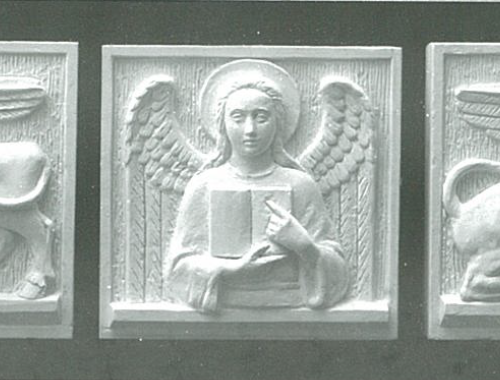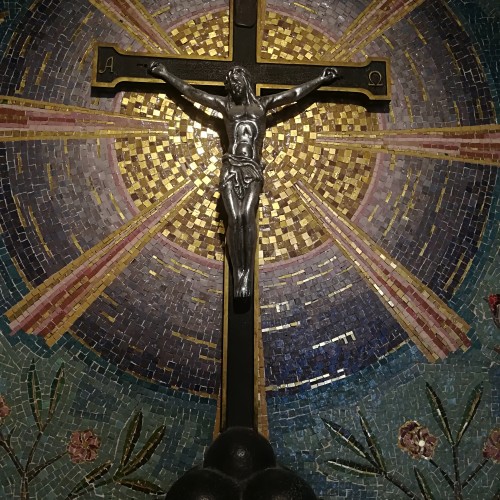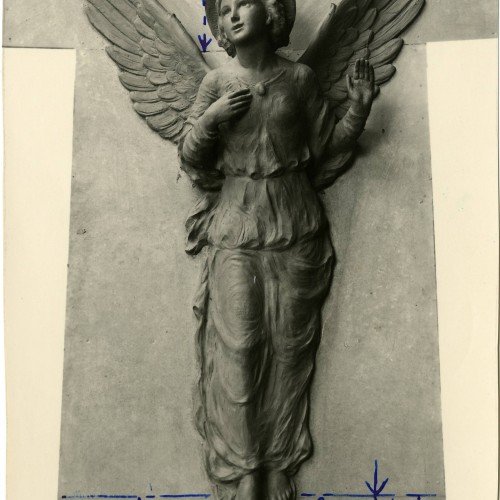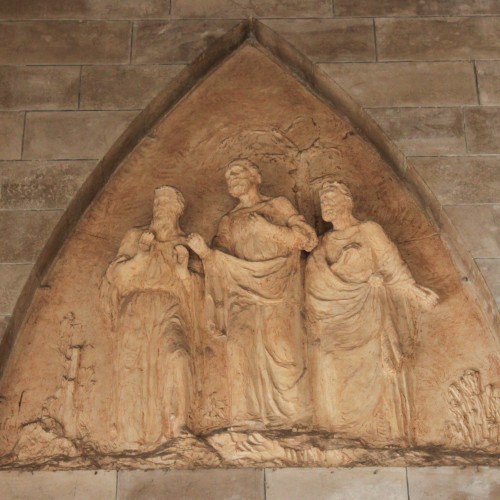From Voghera to the Holy Land: Antonio Minghetti, Sculptor of Christianity
In the Holy Land, many countries have contributed to the planning and construction of Christian buildings. One can just think of the Basilica of Gethsemani, also known as the Church of All Nations, whose construction and realization took place thanks to the economic support of many countries all over the world. In particular, Italy has played an extraordinarily important role over the years by offering her ability and competence in the planning of many sacred buildings. Just think of Antonio Barluzzi (b. Rome, 1884 – d. Rome, 1960), architect active in the Holy Land during the first half of the 20th century and designer of, among others, of the above mentioned basilica, the Church of the Beatitudes overlooking the Sea of Galilee, the Church of the Visitation at Ein Karem, and Dominus Flevit atop the Mount of Olives in Jerusalem.
Another personage of great relevance for the artistic and cultural history of the Holy Land is none other than Antonio Minghetti (b. Vicenza, 1880 – d. Voghera, 1964), a scupltor Vincentine by birth but Vogherese by adoption, as well as a faithful collaborator with Barluzzi from the beginning of his career.
Trained in the artistic field at the Scuola d’Arte di Vicenza, Minghetti then studied at Venice and Perugia. After his first work experience in Milan, he relocated to Voghera which became the theater of his first, relevant artistic season. From his studio in the Via Angelini came a number of sculptures which are still among the finest in the city today. His first significant work was, in 1910, the funerary monument of Ernesto Majocchi, a Vogherese journalist close to local socialists and friend of another important artist, Giuseppe Pellizza da Volpedo. This work, which allowed Minghetti to become well known among local artists as “a young artist of ingenuity” (Artisti italiani in Terrasanta. Pittori, scultori e artigiani al lavoro nei santuari di Antonio Barluzzi (1914-1955), Bruno Mantura, Anna Maria Damigella, & Gian Maria Secco Suardo, eds., Città del Vaticano, Edizioni Musei Vaticani, 2017, p. 300) was only the antipasto of what would later be recognized as his first masterpieces. Most excellent are the sketches and statues of the Evangelists gathered in the niches of the of the pillars which support the cupola of the Duomo di San Lorenzo in Voghera (vide Virginio Giacomo Bono, Gli Evangelisti e la varia ritrattistica di Antonio Minghetti Scultore vogherese schivo e raffinato, «Giornale di Voghera», 18 aprile 2013). The statues, which offer greater refinement and vitality to the church, so important to the city, were executed in the years 1910-1912.
Minghetti, to whom local sources attribute a strongly self-critical spirit and a style markedly influenced by the Italian art of the Quattrocento, returned, at the beginning of the 1920s, to the origins of his artistic career, being focusted upon the realization of many funerary sculptures for the city’s most influential families.
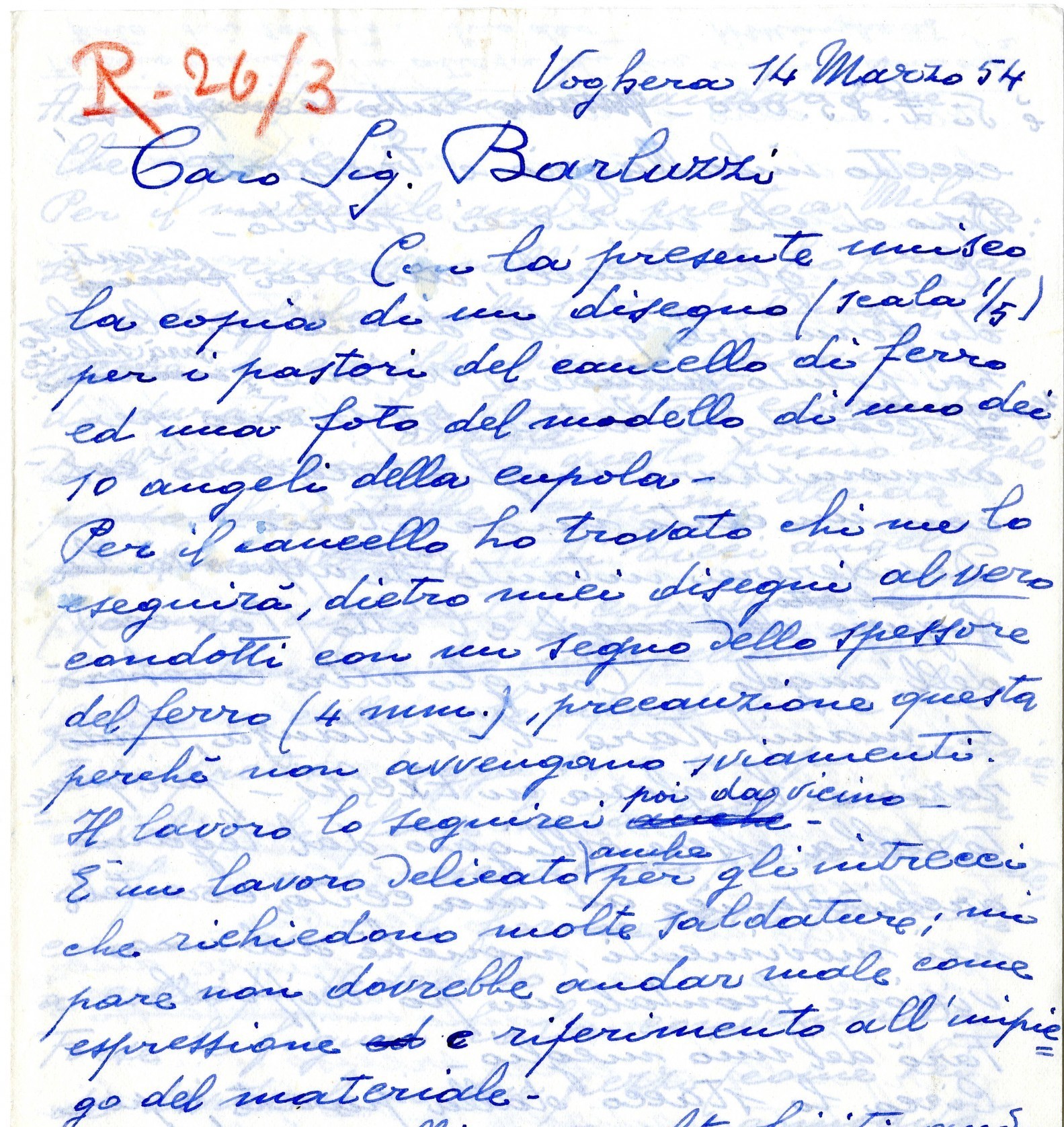
[it] Lettera di Antonio Minghetti a Antonio Barluzzi, Voghera 1954[/it][en]Letter from Antonio Minghetti to Antonio Barluzzi, Voghera 1954[/en][fr]Lettre de Antonio Minghetti à Antonio Barluzzi, Voghera 1954[/fr][es]Carta de Antonio Minghetti a Antonio Barluzzi, Voghera 1954[/es]
The acme of Minghetti’s career arrived, however, in the latter half of the 1930s, when he worked for sacred buildings of the Custody of the Holy Land, in close collaboration with Antonio Barluzzi (1884-1960), chief-architect of several projects related to the churches of the holy sites. His works were inspired “by elevated concepts and a most noble sense of probity” (Artisti italiani in Terrasanta, p. 301)—a rule which also applied for his commemorative sculptures of the war-dead near Pavia, another great aristic phase for Minghetti from the 1930s to the 1950s.
His first job in the Holy Land (1937-38) was with the Sanctuary of the Beatitudes, erected by Barluzzi in 1937 on a hill by the bank of the Sea of Galilee, near Tabgha. Here, where tradition located the “sermon on the mount” by Jesus to his disciples (Mt 5:1-7, 29), Barluzzi entrusted Minghetti with the decoration of the arch above the central altar: in particular, Minghetti executed the heads of the seraphim (5 per side), the tiles with the symbols of the evangelists at the base, the dove, and the lamp chain.
A few months later (1938-39), Minghetti was called to execeute some pieces for the Sanctuary of the Visitation at Ain Karem, a few kilometers from Jerusalem, always accompanying the work of Barluzzi. In fact, the the commitment was small in this case because the project involved mostly pictorial interventions. Minghetti realized the plinth which sustains the table of the altar, where he sculpted the Lamb Immolated with, at the base, a burning bundle of thorns to symbolize sacrifice. Minghetti’s work also consisted of the marble tabernacle, the elegant silver crucifix, and six bronze candles.
Minghetti’s works for the Holy Land suffered a setback, namely difficulties caused by the war, until the early 1950s when Barluzzi asked the Vorgherese sculpture for assistance for his new projects. During the years 1952-1953, Minghetti completed some pieces for the Sanctuary of the Resurrection of St. Lazarus in Bethany: in particular, two marble medallions with the figures of Mary and Martha, respective symbols of the contemplative life and the active life, set on the front of the side altars.
In the years 1953-54, he completed the facade of the Sanctuary of the Field of Shepherds, erected in the in Beit Sahur, near Bethlehem, where the episode of the annuncaition of the birth of Jesus to a group of shephered by angels (Lk 2:8-20) is said to have taken place. Here Minghetti realized a work perhaps not of lofty artistic complexity, but certainly of great visibility, that is, 10 sculptures representing the angels of the annunciation, for which he had the task of interspersing as many round windows with blue stained glass for the cupola, which bore the evangelic inscription “ Gloria in excelsis Deo et in terra pax hominibus bonae voluntatis.”
Minghetti’s final job in the Holy Land is visible in the Church of Dominus Flevit, atop the Mount of Olives in Jerusalem, erected by Barluzzi in 1955 over the remains of a Byzantine church, constructed over the place in which the Gospels narrate the weeping of Jesus before the city. Here Minghetti realized two ogival lunnettes (in total there are four, the other two executed by Duilio Cambellotti) applied on the walls under the vault of the sanctuary. The reliefs of the Vorghese sculpture represent two iconic figures, namely the discourse wherein Christ predicted the destruction of the Temple to his disciples ( Mt 24:1-2) with the representation of Jesus and two disciples, and the grieving Virgin with a female figure with a child at her side (probably St. Elizabeth and St. John) on the right and another figure facing Mary on the left.
Although Minghetti’s work was mostly recognized locally, remaining however outside the group of nationally renowned sculptors, his temperament was mild but scrupulous and attentive at all stages of the realization of his work, in search of a perfection that by his own admission was unattainable. Nonetheless, he earned the confidence of Barluzzi, principle architect of the Christian sanctuaries of the Holy Land, who raised the prestige of his sculptures from their lowly provincial origins to those lofty sites at the centre of Christianity.

